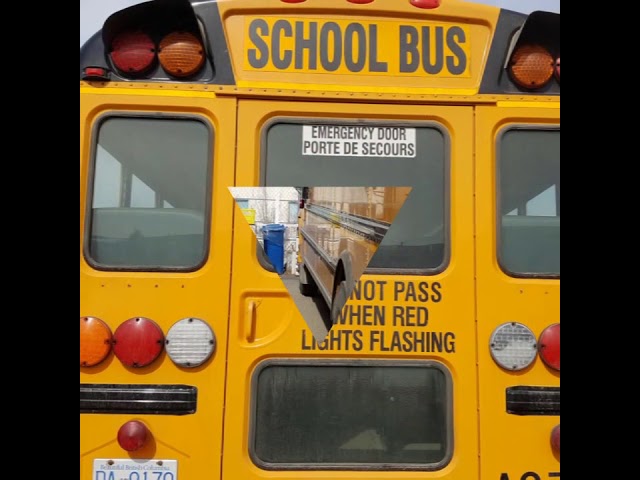This is a tour of the various parts and components you might not usually see on an IC (International Corporation) school bus. There are many lettered signs with instructions how to exit or open doors and windows somewhat familiar to travelling on an aircraft. The body side of International school buses are quite reliable and have a nice fit. The plastic, glass and metal at times are on the weak side but overall the fit and finish is very good.
One weak spot as with lots of school buses is the paint resilience. We’ve experience poor paint adhesion on fenders and around doors. The weather in B.C. can be challenging so if that paint isn’t sticking properly from the factory it’s not going to last. In the video I took a photo of the cargo bay which is a nice size so almost anything will fit. Of course I have to mention the down side which is dirt and water gets in to this storage area so if you had an expensive cloth bag or suitcase I would think twice about putting it in this space.
Glass is an ongoing problem with broken seals which causes a fogged condition. Of course this means the glass must be replaced because the driver can’t see through the glass clearly. Our operation has a full time body man for a reason. He is kept busy with side glass, seat repairs and of course dents and paint repairs. The 2 International engines we have in our 2010 to 2013 buses are not doing well. They are wearing out far too early and we’re scrambling to get the last bunch in to the dealer for warranty.
The soot and ash (byproducts of combustion) have been doing a number on internal components of these diesels so a more frequent oil change duration is now in place to reduce premature wear. I’ve never seen diesel engines wear out this fast in a school bus. They don’t have a huge load and just do a four hour run every day. It’s baffling and frustrating to see all these failures happening so soon.
Other than that we’re adjusting our tactics with the PM program to reduce mechanical down time and keep up with the outside and inside wear and tear issues. Once you see a pattern there are ways to fix it and make it stop for good. That’s experience mixed in with practical changes that the entire crew in our garage implement.







